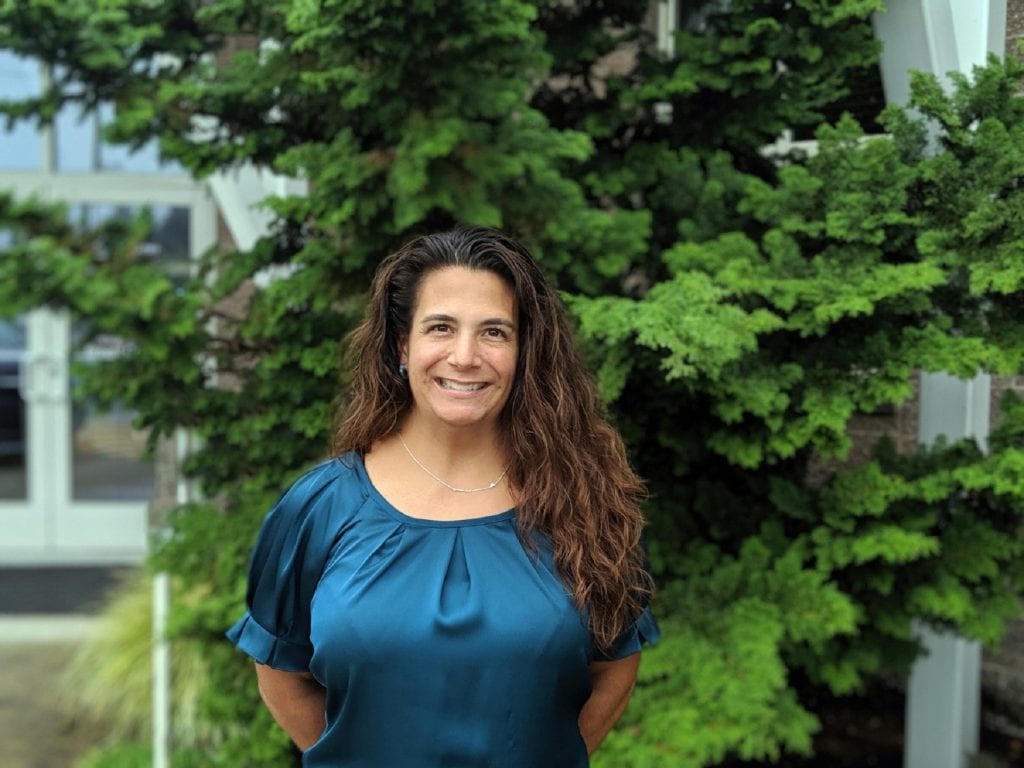The staff at Carol Milgard Breast Center wants you to stay healthy in all areas, including your breast health. During the COVID-19 breakout, some screening appointments have been postponed. Even though you may not be able to get in for a screening mammogram, there are things you can do at home to safeguard your breast health at this time.

Because the signs of breast cancer are not the same for all women, it’s important to know how your breasts normally look and feel. “I always recommend just getting to know your breasts,” says Dana Sanchez-Terry, an ARNP with Carol Milgard Breast Center. With over ten years of women’s health experience, Sanchez-Terry offers helpful advice on breast health.
“The best way to get to know what is normal for you is by focusing on breast self-awareness,” she says. Practicing breast self-awareness is recommended by numerous experts including the American Cancer Society, the U.S. Preventative Services Task Force and the American Congress of Obstetricians and Gynecologists.
Breast self-awareness isn’t about following a certain method and schedule, but rather knowing what’s normal for you so even small changes are noticed right away. “Breast tissue is very responsive to hormonal fluctuations in the body,” Sanchez-Terry says.

For instance, a woman who is still having regular menstrual cycles may notice that her breasts feel different depending on where she is at in her cycle. Additionally, a postmenopausal woman may notice that her breasts feel different than when she was having regular menstrual cycles. Therefore, it is a good idea to get to know how your breasts look and feel at different times of the month both before and after menopause.
“Get to know how your breasts look, look at yourself in the mirror regularly, even daily,” Sanchez-Terry advises. “Feel your breasts while standing or sitting up as well as lying down.”
It’s equally vital to know where to look and touch while practicing breast self-awareness. Breast tissue goes from your collar bone down to close to the bottom of the ribcage and up into the underarm. Normal breasts can look slightly asymmetric and normal breast tissue can feel lumpy and even sometimes feel tender about seven to ten days before the start of a woman’s period.
Many women may notice an overall lumpy feel to their breasts, which can be normal. But if you notice any changes in how your breast or underarm tissue looks or feels, see your healthcare provider right away.

An additional recommendation is to get to know your individual risk for breast cancer. If possible, talk to both sides of your family to learn about your family health history. Although, even if you have no family history of breast cancer, you should still practice breast self-awareness.
It’s also a good idea to discuss with your primary care provider when to begin screening and how often since 85 percent of women diagnosed with breast cancer have no family history.
Warning Signs to Bring to Your Healthcare Provider’s Attention
- A lump, hard knot or thickening inside the breast or underarm area.
- Swelling of the breast or underarm area, a sudden change in size or shape, warmth or redness to the skin, or a darkening of the skin.
- Dimpling or puckering of the skin or nipple, or an area of skin that starts to resemble the texture of an orange peel.
- Persistent itchy or scaly skin or nipple, a sore that won’t heal or a rash.
- Pulling in or new-onset retraction of the nipple.
- Spontaneous nipple discharge not related to pregnancy or lactation.
- New pain in one spot, that does not go away (breast pain is a less suspicious finding when it is cyclic and present in both breasts).
Most of the time, breast lumps are found to be benign. However, if you think you’ve found a lump or other breast abnormality, it’s important to contact your primary care provider right away. Your provider may recommend coming in for a clinical breast exam and may order some diagnostic imaging of your breasts for further evaluation.
To find more information on how to perform breast self-awareness and what things to look for visit the Carol Milgard Breast Center’s website.
Sponsored















































